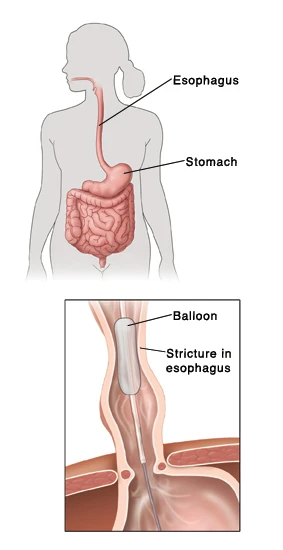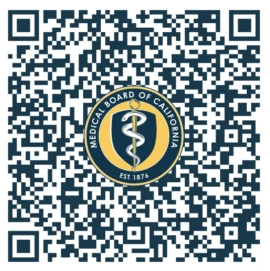Your doctor recommends that you have esophageal dilation (also called dilatation). This procedure is used to widen a narrowed section of the esophagus. This is the tube that leads from the throat to the stomach. Narrowing, or stricture, of the esophagus can cause problems. These include trouble swallowing. This sheet explains what to expect with esophageal dilation.
Why Esophageal Dilation Is Needed

Several problems can be treated with esophageal dilation. They include:
- Peptic stricture. This is caused by reflux esophagitis. With this problem, the esophagus is irritated by acid reflux. This occurs when acid from the stomach flows back up into the esophagus. Stomach acid damages the lining of the esophagus. This leads to a buildup of scar tissue. As a result, the esophagus is narrowed.
- Schatzki’s ring. This is an abnormal ring of tissue. It forms where the esophagus meets the stomach. It can cause trouble swallowing. It can also cause food to become stuck in the esophagus. The cause of this condition is not known.
- Achalasia. This problem prevents food and liquids from moving into the stomach from the esophagus. The lower esophageal sphincter (LES) is a muscular ring. It relaxes (opens) during swallowing. With achalasia, it does not relax. Also with this problem, peristalsis does not work well. This is the normal action of the esophagus that moves food into the stomach.
Before You Have Esophageal Dilation
- Tell your doctor about any medications you take. This includes supplements. Be sure to mention aspirin or any blood thinners you’re taking. And let your doctor know if you need to take antibiotics before dental procedures. You may need to take them before esophageal dilation as well.
- Tell your doctor about any health conditions you have, such as heart or lung disease. Also mention any allergies to medications.
- You’ll need to have an empty stomach for the procedure. Be sure to follow your doctor’s instructions for not eating and drinking before the procedure.
- Arrange to have a family member or friend drive you home after the procedure.
During the Procedure
- You may be given local anesthesia to numb your throat. You’ll also likely be given anesthesia (conscious sedation) to relax you. The procedure takes about 15 minutes.
- An endoscope (scope) is used. This is a narrow tube with a tiny light and camera at the end. The scope is inserted through your mouth and into your esophagus. It allows the doctor to see inside the esophagus. Fluoroscopy may also be used. This imaging technique creates a continuous x-ray image on a monitor throughout the procedure.
- Next, special instruments are carefully guided through the mouth and down into the esophagus. They widen the stricture and are then removed. Different types of instruments are used. The type used depends on the width and cause of the stricture. Types include:
- Balloon dilator. A tiny deflated balloon is inserted into the stricture using an endoscope. The balloon is slowly inflated. It’s deflated when the stricture is widened enough. Balloon dilators are used to treat a wide range of strictures. They can also be used to stretch the LES in cases of achalasia.
- Guided wire dilator. A thin wire is eased down the esophagus. A small tube that’s wider on one end is guided down the wire into the stricture to stretch it. These dilators are used to treat all kinds of strictures.
- Bougies. These are weighted, cone-shaped tubes. Starting with smaller cones, your doctor uses increasingly larger cones until the stricture is stretched the right amount. Bougies are often used to treat strictures that are simple (short, straight, and not very narrow).
After the Procedure
- You’ll be observed until your doctor says you’re ready to go home. You’ll need to have a friend or family member drive you home.
- You may have a sore throat for the rest of the day.
- You can start drinking again after the numbness in your throat goes away. You can resume eating the next day.
Risks and Possible Complications
Risks and possible complications for esophageal dilation include:
- Infection
- A tear or hole in the esophagus lining, causing bleeding and possibly requiring surgical repair
- Risks of anesthesia
Follow-Up
You may need to have the procedure repeated one or more times. This depends on the cause and extent of the narrowing. Repeat procedures can allow the dilation to take place more gradually. This reduces the risks of the procedure.
If your stricture was caused by reflux esophagitis, you’ll likely need to take medication to treat that condition. Your doctor will tell you more.
When to Call the Doctor
Call your doctor right away if you have any of the following after the procedure:
- Fever of 100.4°F
- Chest pain
- Trouble swallowing
- Bleeding
- Black stools


